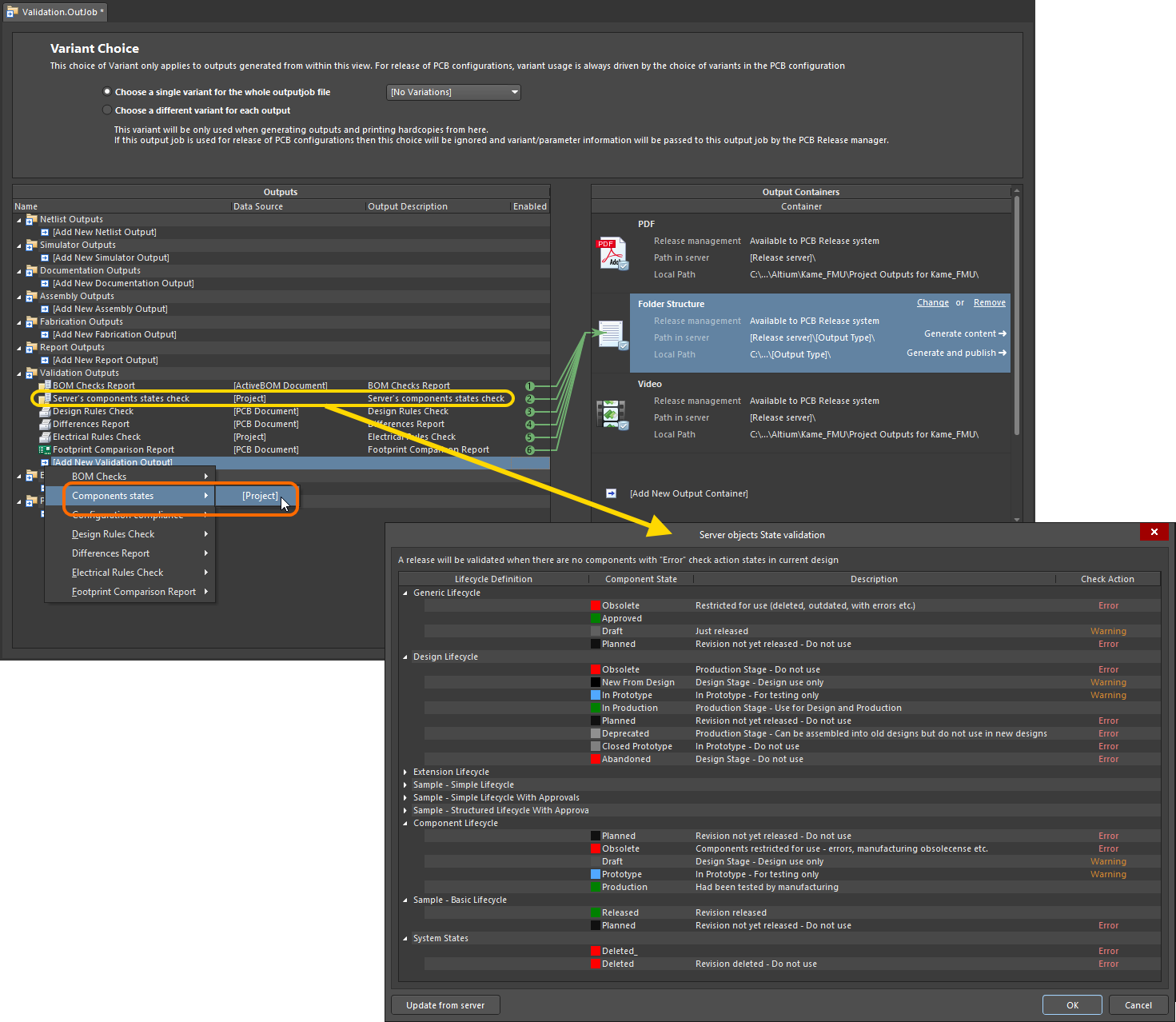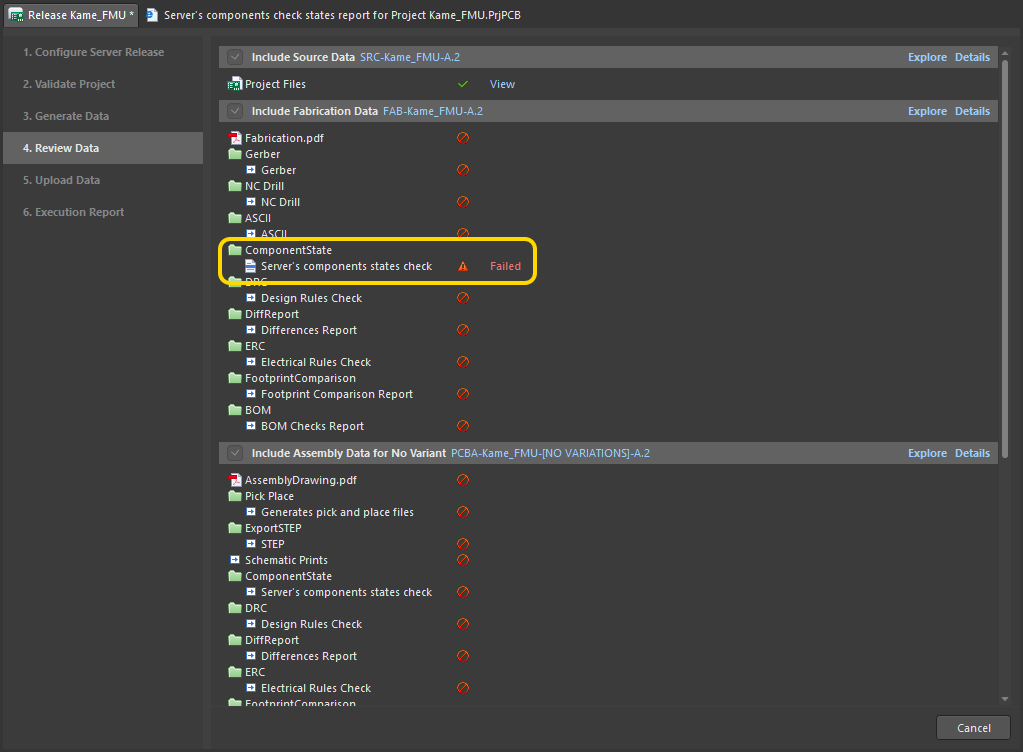Parent page: Working with Components
Components offer the designer a formal collection of high-quality, high-integrity, design building blocks. Revision-controlled and lifecycle-managed, a company can authorize the component library that can be formally used by their designers, in each new design project embarked upon within that company. However, while components may be authorized for design reuse, there also needs to be automated checking at the release validation stage, to verify that they are indeed in the right state to be used.
Altium Designer, in conjunction with your connected Workspace, provides an elegant solution to this, in the form of Component State Checking. A validation-based outputter is available for addition to an Output Job file – Components states. This can be configured to check for components that are in restricted states. As part of configuration, you determine the action to be taken for each currently defined state, of each currently defined Lifecycle Definition in the Workspace – no action, a warning, or generate an error. The latter will prevent release of the design. In addition, running the check will generate a handy HTML-based report, allowing you to see at-a-glance which design components are not in valid states.
Issues with using design items in restricted states can also be detected much earlier in the design cycle, during project validation. This concerns an Item Revision's applicability based on its current state, and whether it is allowed to be used in designs while in that state. This is controlled through use of a dedicated attribute at the individual state level. A project violation can be configured to detect and flag any Workspace items being used in a design, whose revisions are in non-applicable states – catching and averting issues prior to release. For more detail, see the
Controlling Item Revision Visibility and Applicability section of the
Defining Lifecycle Definitions for a Workspace page.
When enforcing the working environments of your designers through the use of
Environment Configurations, you can ensure the use of the Output Job file in which component state checking has been defined. To do so, make sure the Output Job file permitted for use through the applicable environment configuration is marked as required – by enabling its
Req'd attribute. If an OutJob defined as part of an environment configuration is marked as required, then release will not be possible until that OutJob is present and enabled for inclusion in the relevant data set being generated as part of project release. For more information, see
Managing Environment Configurations.
Add an output generator of this type from the Validation Outputs section of the OutJob file. Configuration is performed in the Server objects State validation dialog.
To access this configuration dialog, either double-click on the entry for the outputter, right-click on its entry and choose Configure from the context menu, or select its entry and use the Alt+Enter keyboard shortcut.

Add and configure a component state check as part of your overall validation regimen during board design release.
The dialog presents all lifecycle definitions defined for the Workspace to which you are actively connected. For each definition, each uniquely defined state is listed, along with its description. For each state associated with a lifecycle definition you employ for components in your designs, simply specify the checking action to be taken. Click within a state's Check Action field and select the required action from the associated drop-down menu. Available checking options are None, Warning, and Error.
Click the

button to refresh the dialog with the latest lifecycle definition information, directly from the Workspace.
Revisions of Component Items used in the design that are in a restricted state (one whose Check Action has been set to Error) will prevent the release of the board from happening. The generated report file will list all warnings and errors.

Example board release failing at the validation stage while checking component states. Hover over the image to see the generated report. Here, the design is found to contain four components that are in a restricted lifecycle state, and the release process is terminated in failure.

Example board release failing at the validation stage while checking component states. Hover over the image to see the generated report. Here, the design is found to contain four components that are in a restricted lifecycle state, and the release process is terminated in failure.
If you are using Workspace output job templates, ensure the component state check is added to the relevant source Output Job file and configured
BEFORE releasing that OutJob to the Workspace. Once released, the revision of the OutJob file – specifically the configuration of an output generator – can not be changed. You would need to make changes and re-release into the next planned revision of the target Item. For more information, see
Output Job Template.



